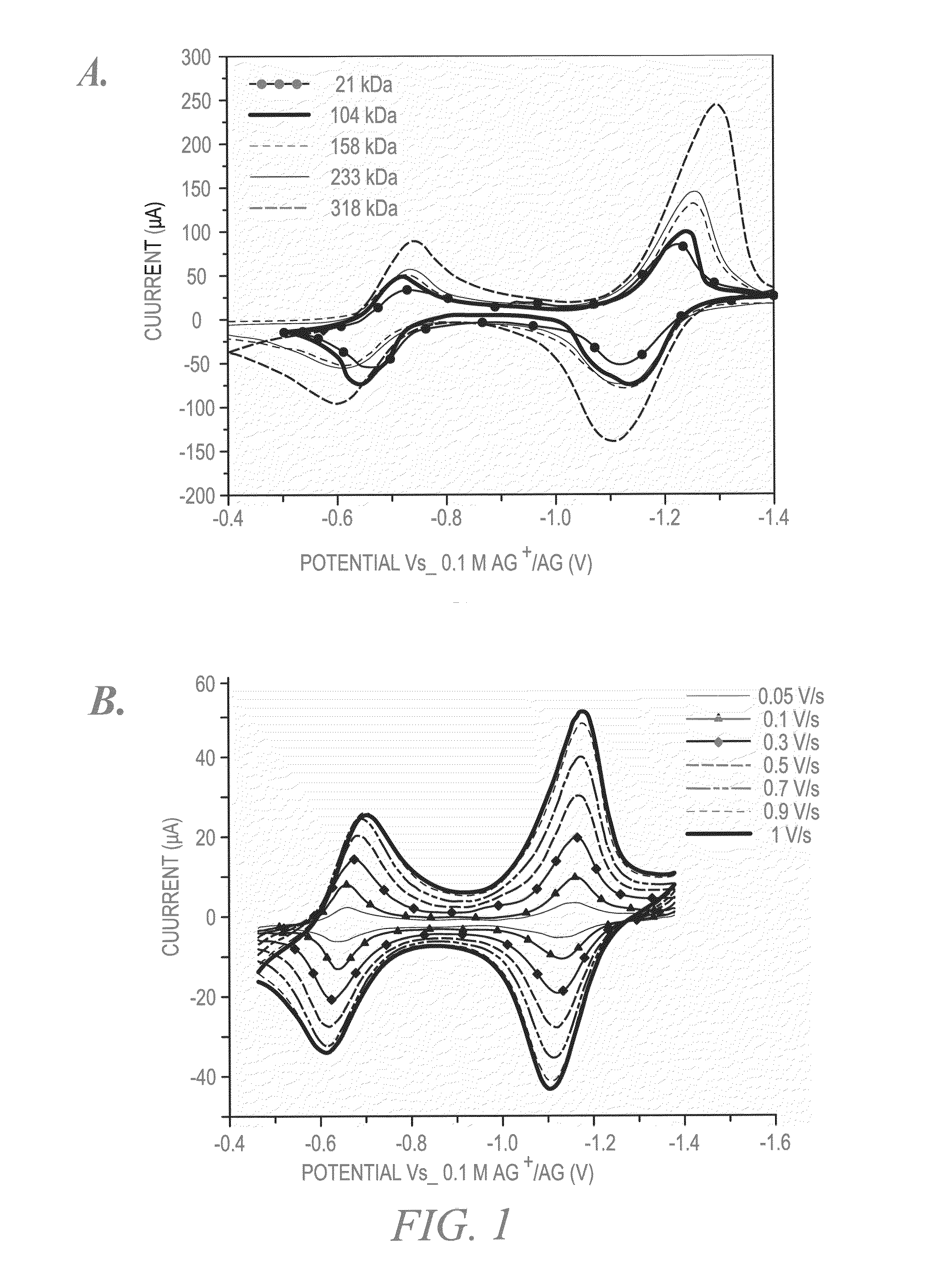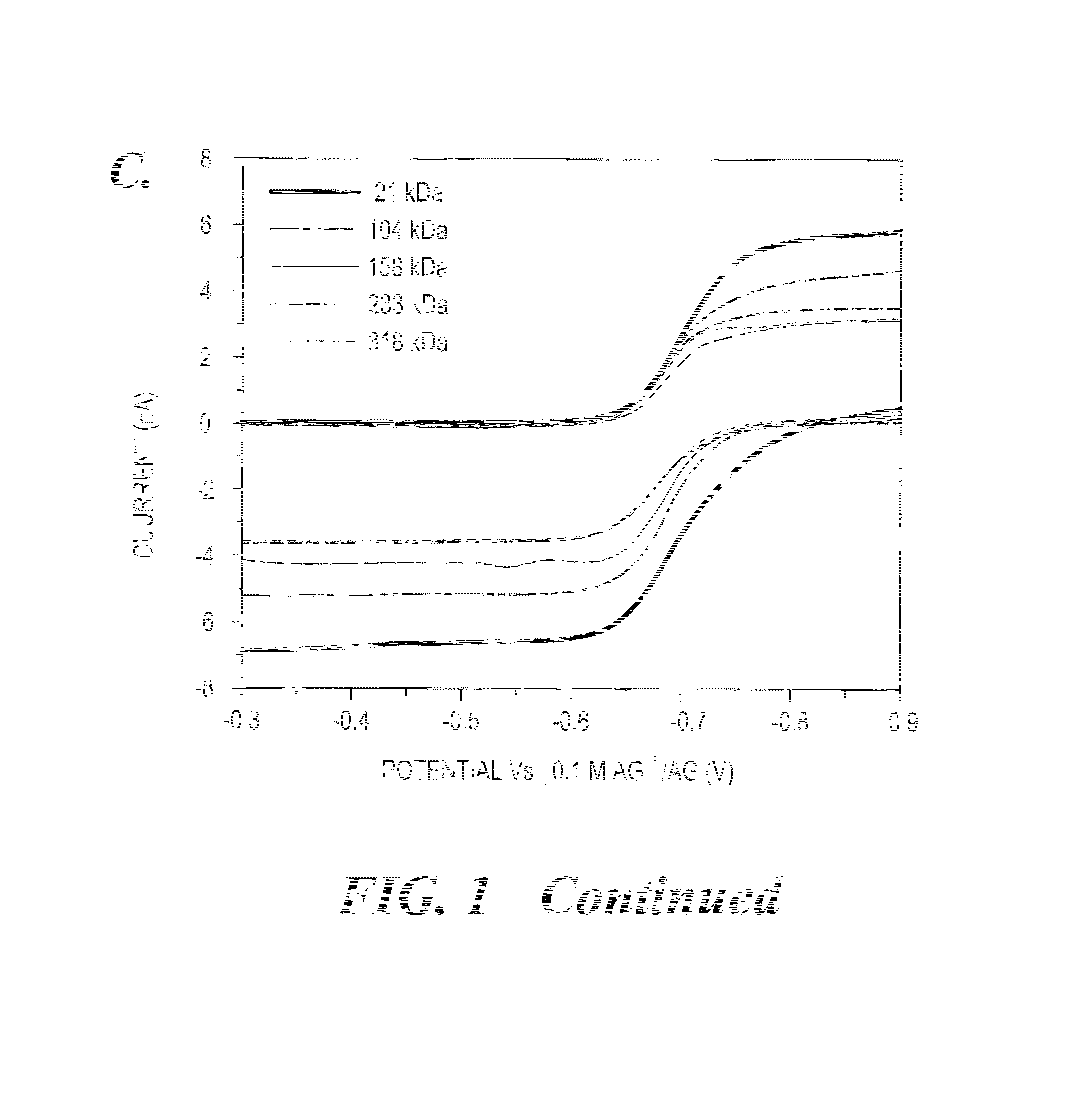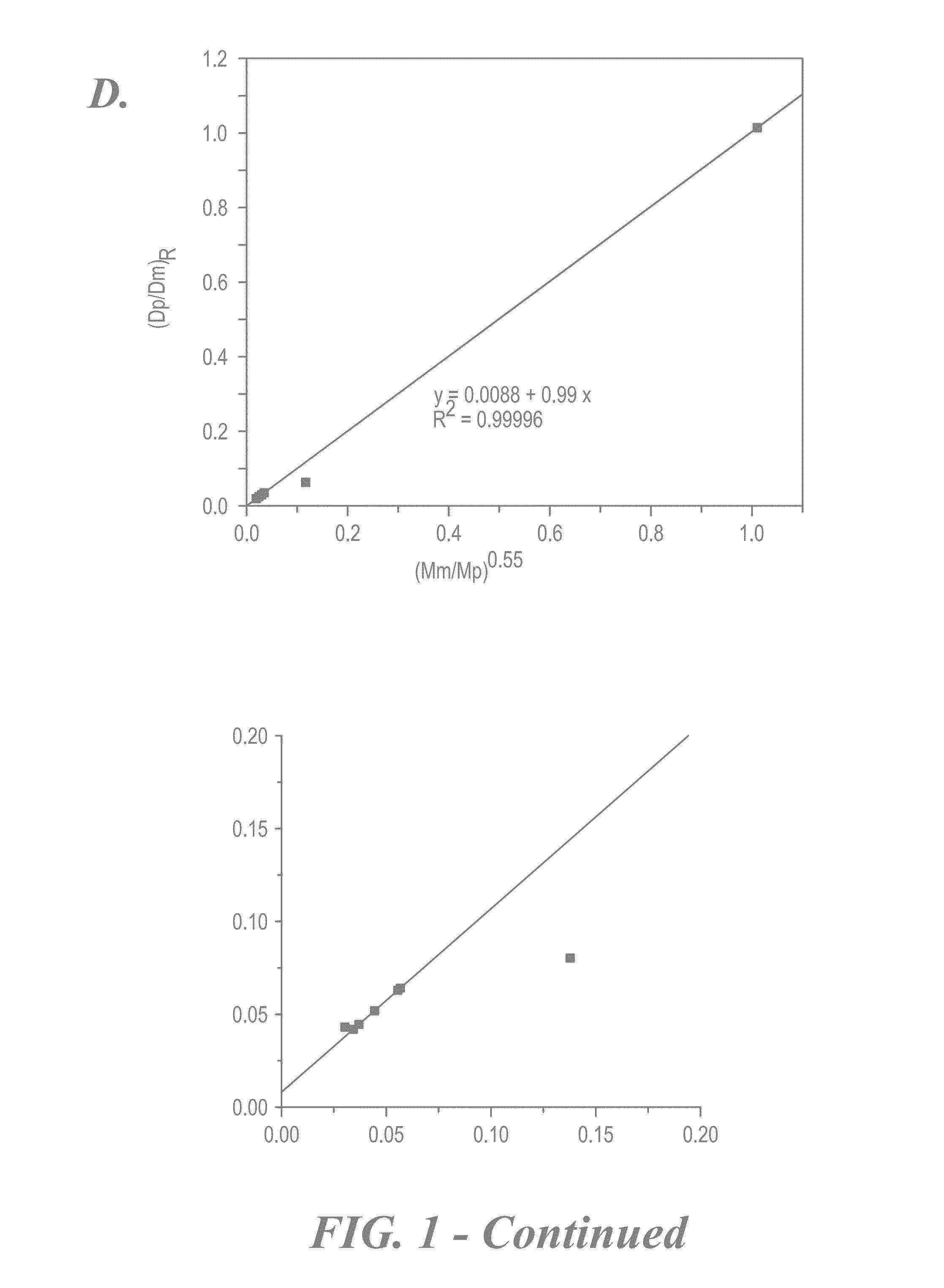Redox active polymers and colloidal particles for flow batteries
a technology of flow batteries and active polymers, which is applied in the direction of aqueous electrolyte fuel cells, indirect fuel cells, electrochemical generators, etc., can solve the problems of 20% of the battery cost, high cost of iems, and large-scale development of nrfbs, so as to reduce power and current density, affect the overall performance of the battery, and reduce the cost of iems.
- Summary
- Abstract
- Description
- Claims
- Application Information
AI Technical Summary
Benefits of technology
Problems solved by technology
Method used
Image
Examples
example 1
Synthesis of Redox Active Monomer and Polymers
[0122]
[0123]Ethyl viologen hexafluoro phosphate (1): 1 was synthesized following the reported procedure (Heinen, S.; Walder, L. Angew. Chem. Int. Ed. 2000, 39, 806-809). 1H NMR ((CD3)2SO): δ=9.24 (d, J=10 Hz, 2H), 8.87 (dd, J=5 Hz, 2H), 8.63 (d, J=10 Hz, 2H), 8.02 (dd, J=5 Hz, 2H), 4.65 (q, J=5 Hz, 2H), 1.58 (t, J=7.5 Hz, 3H). HRMS (EI+) calculated for C12H13F6N2P (M)−330.07, C12H13N2 (M-PF6)+185.11; Found (M-PF6)+185.11.
PVBCRAPMn (kDa)PDIMn (kDa)5.31.921271.9104411.6158601.9233821.6318DPPVBC = MnPVBC / 152.62 DaMnRAP = DPPVBC × 592.35 Da
[0124]Redox active polymers (RAPs 1-5): Dry DMF (15 mL) was added to a flask containing PVBC (500 mg, 3.27 mmol) and 1 (5.4 g, 16.38 mmol) under nitrogen. The reaction mixture was stirred at 90° C. for 6 days. Concentrated solution of ammonium hexafluoro phosphate (5 g) solution was prepared in water and added to the above reaction mixture. The resultant solution was stirred at room temperature for 12 h an...
example 2
Characterization of Redox-Active Polymers and NRFBs
[0126]Polymer rejection and permeability through a separator can be calculated using the equations described by Mai et al. (J. Power Sources 2011, 196, 482-487). For example,
[0127]Percent Rejection across membrane (%)=[1−(2Cf / Ci)]×100 where Cf=concentration in the receiver compartment after 24 hours; and Ci=initial concentration in the donor compartment; and
Permeability=VB×L×(dCB / dt) / (A×(CA−CB (t)))
where P=Permeability; dCB(t) / dt=Slope from the linear region of concentration vs. time plot; CA=initial concentration in donor compartment; VB=solution volume in the receiver compartment; A=Area of orifice; L=Thickness of the separator (e.g., a Celgard 2325 separator); and CB (t)=time dependent polymer concentration in the receiver compartment.
[0128]RAPs Adsorption onto Membranes. Two types of experiments were carried out to test the adsorption of RAPs on to the membrane. In the first experiment, the membrane used for the transport measur...
example 3
Preparation and Characterization of Redox-Active Colloidal Particles
[0135]Redox-active colloidal particles were prepared and evaluated as redox species for NRFBs. A schematic of the colloidal particles is shown in FIG. 14.
[0136]Polyvinylbenzyl chloride particles (60 nm and 90 nm): The redox-initiated emulsion polymerization of 4-vinylbenzyl chloride reported by Chonde and coworkers (J. Appl. Polym. Sci. 1980, 25, 2407) was modified to synthesize poly(4-vinylbenzyl chloride) (PVBC) particles 60±10 and 90±10 nm in diameter. Reagent quantities are listed in Table 3-1.
TABLE 3-1Recipes for 60-nm and 90-nm PCMS particles.60-nm90-nmReagentRecipeRecipeWater (mL)21.014.010% (w / w) Triton X-100 (mL)16.016.01.0% (w / w) Sodium dodecyl sulfate (mL)16.016.00.1N KOH (mL)12.012.00.01% (w / w) FeSO4•7H2O (mL)1.02.04-Vinylbenzyl chloride, 90% (mL)15.030.0Divinylbenzene, 80% (mL)0.300.601.0% (w / w) NaHSO3 (mL)4.08.03.0% (w / w) K2S2O8 (mL)2.04.0Nitromethane (mL)0.020.02
Larger or smaller particles can be prep...
PUM
| Property | Measurement | Unit |
|---|---|---|
| Fraction | aaaaa | aaaaa |
| Fraction | aaaaa | aaaaa |
| Fraction | aaaaa | aaaaa |
Abstract
Description
Claims
Application Information
 Login to View More
Login to View More - R&D
- Intellectual Property
- Life Sciences
- Materials
- Tech Scout
- Unparalleled Data Quality
- Higher Quality Content
- 60% Fewer Hallucinations
Browse by: Latest US Patents, China's latest patents, Technical Efficacy Thesaurus, Application Domain, Technology Topic, Popular Technical Reports.
© 2025 PatSnap. All rights reserved.Legal|Privacy policy|Modern Slavery Act Transparency Statement|Sitemap|About US| Contact US: help@patsnap.com



